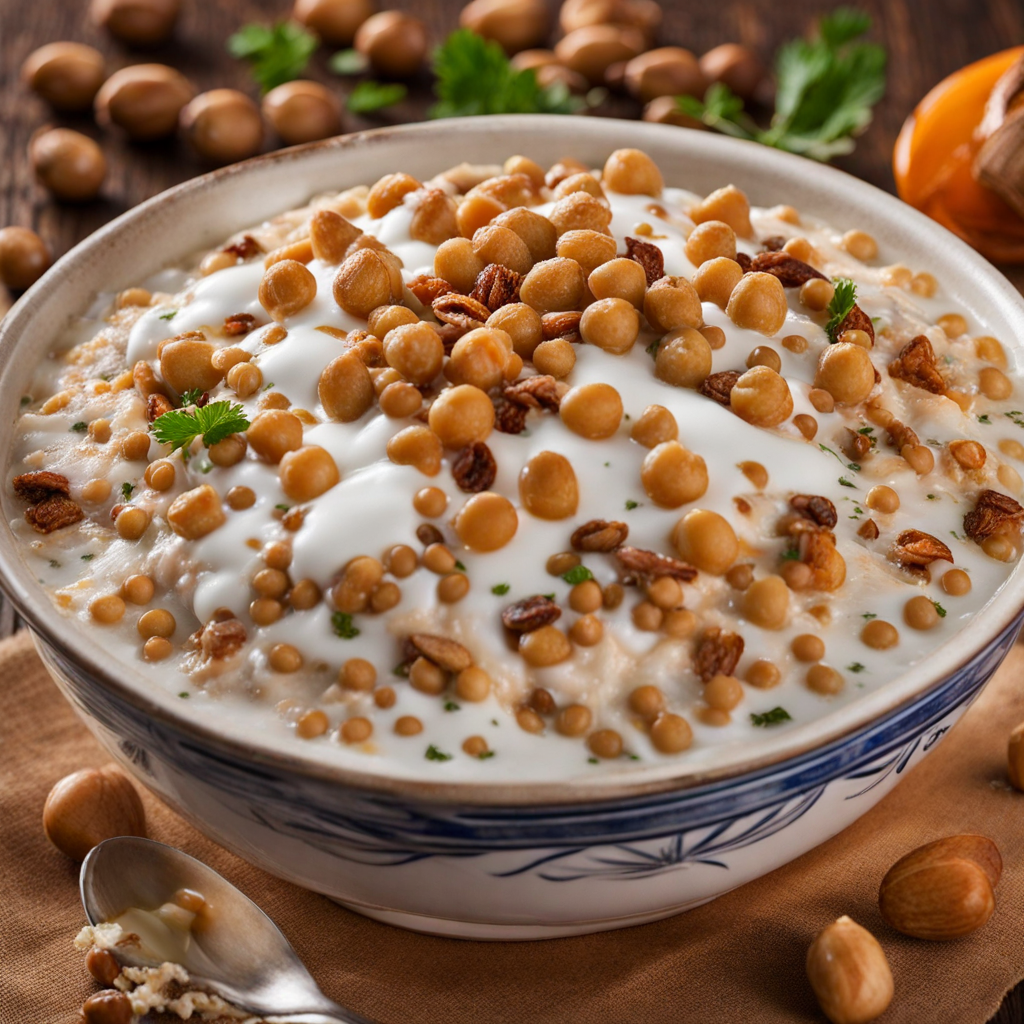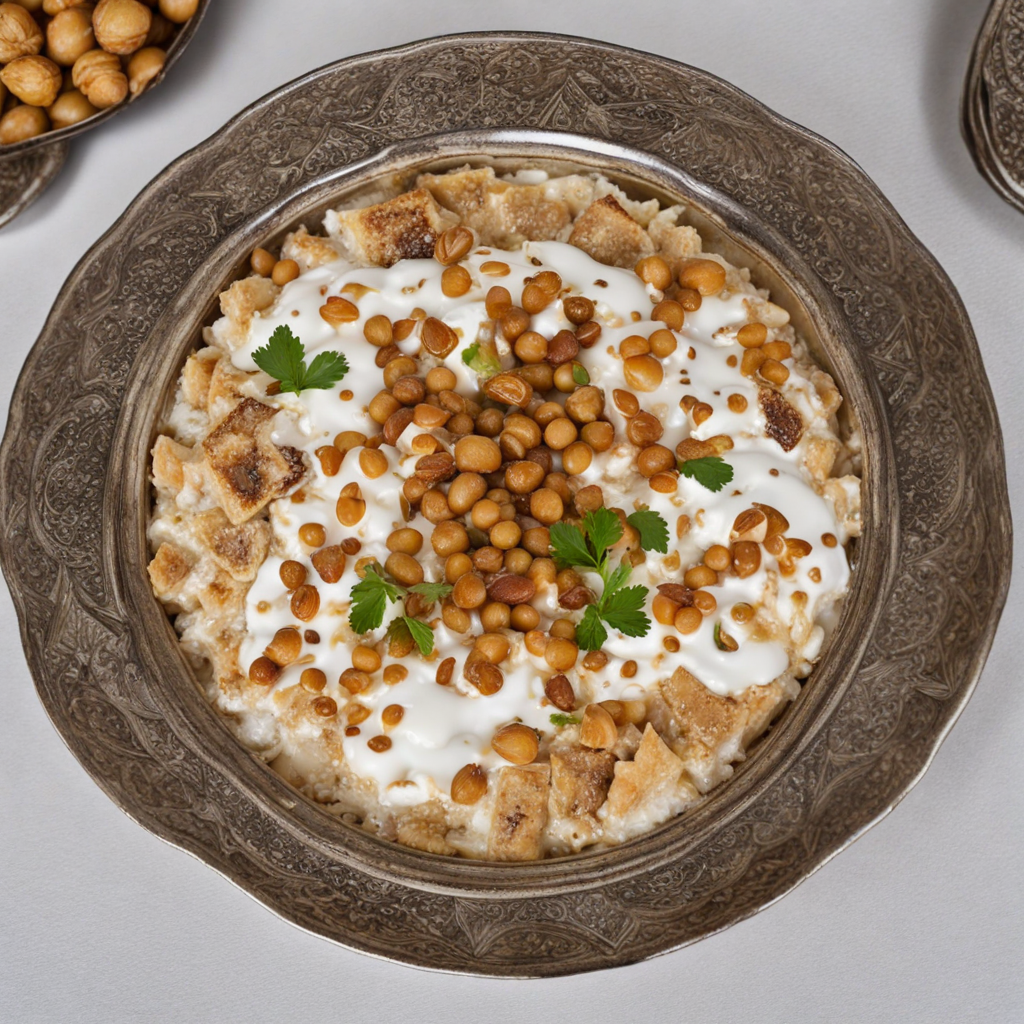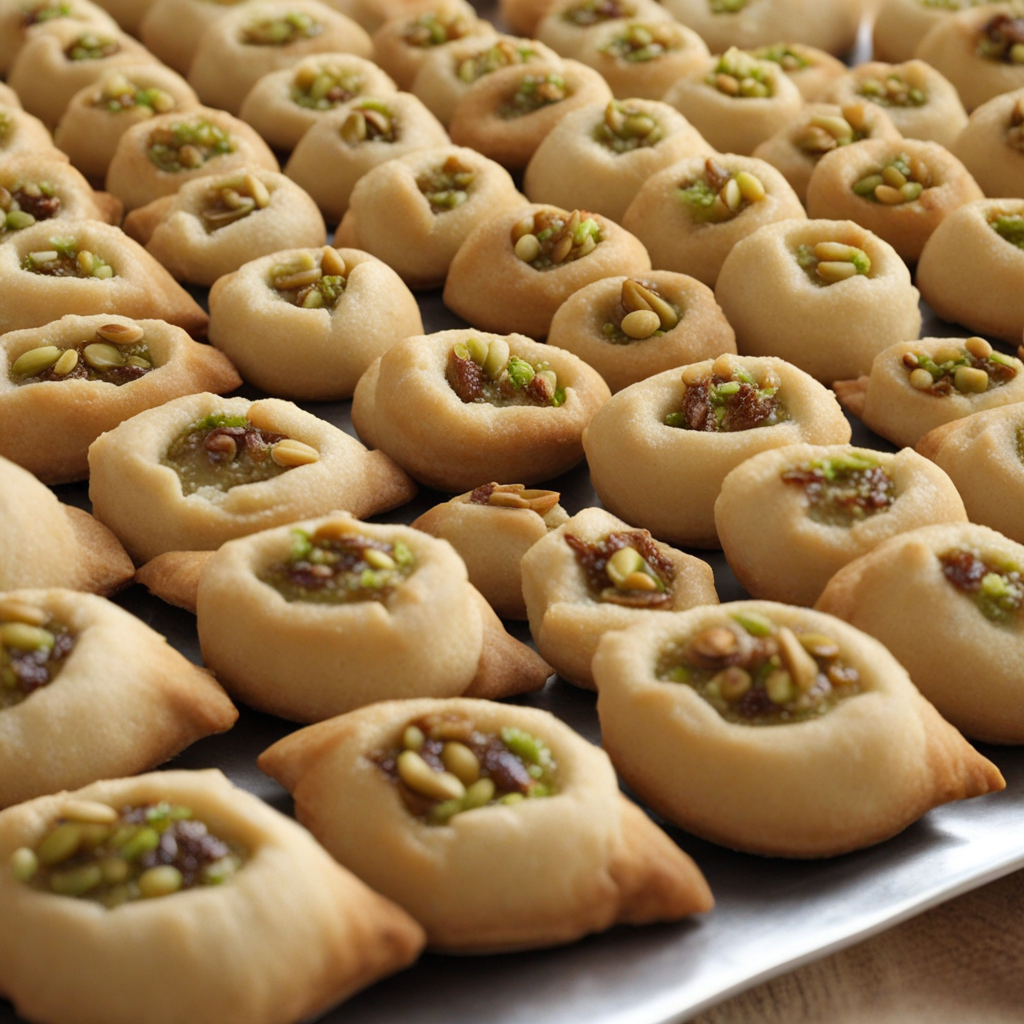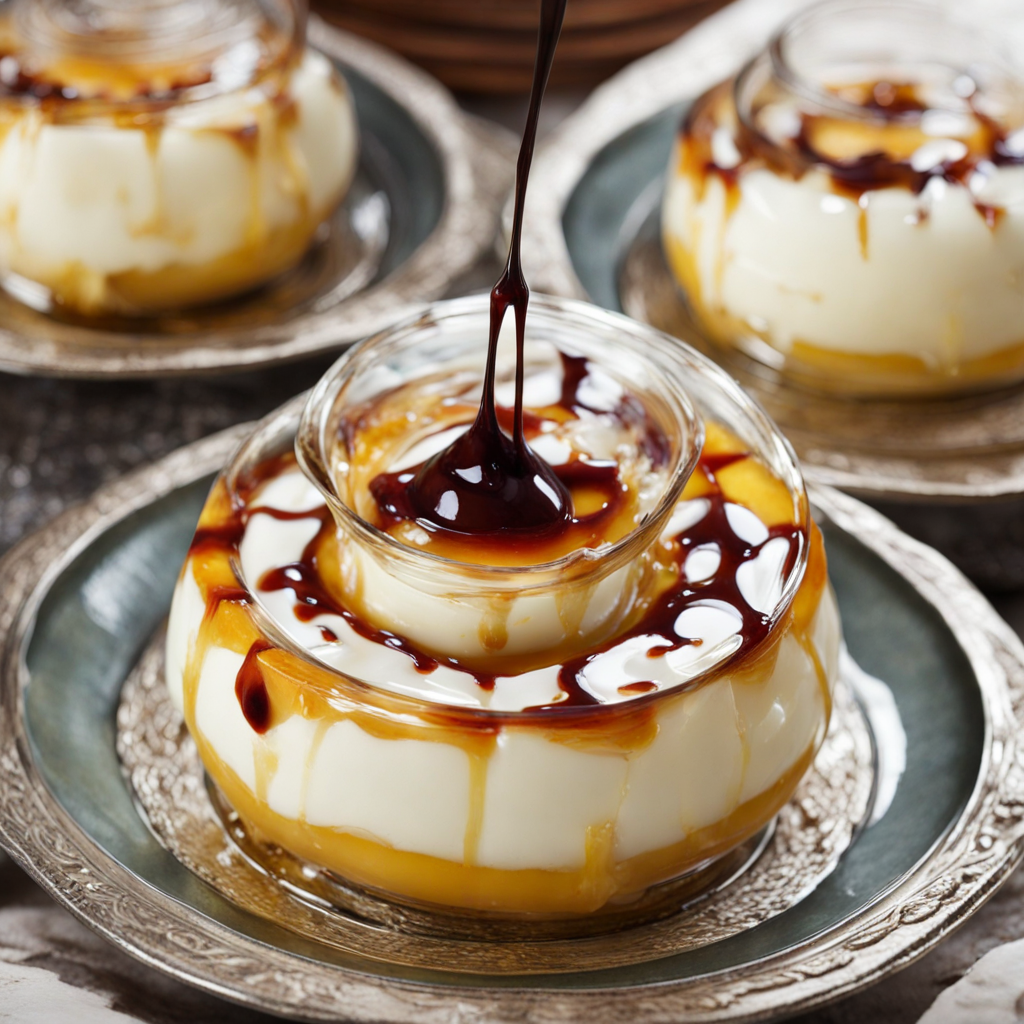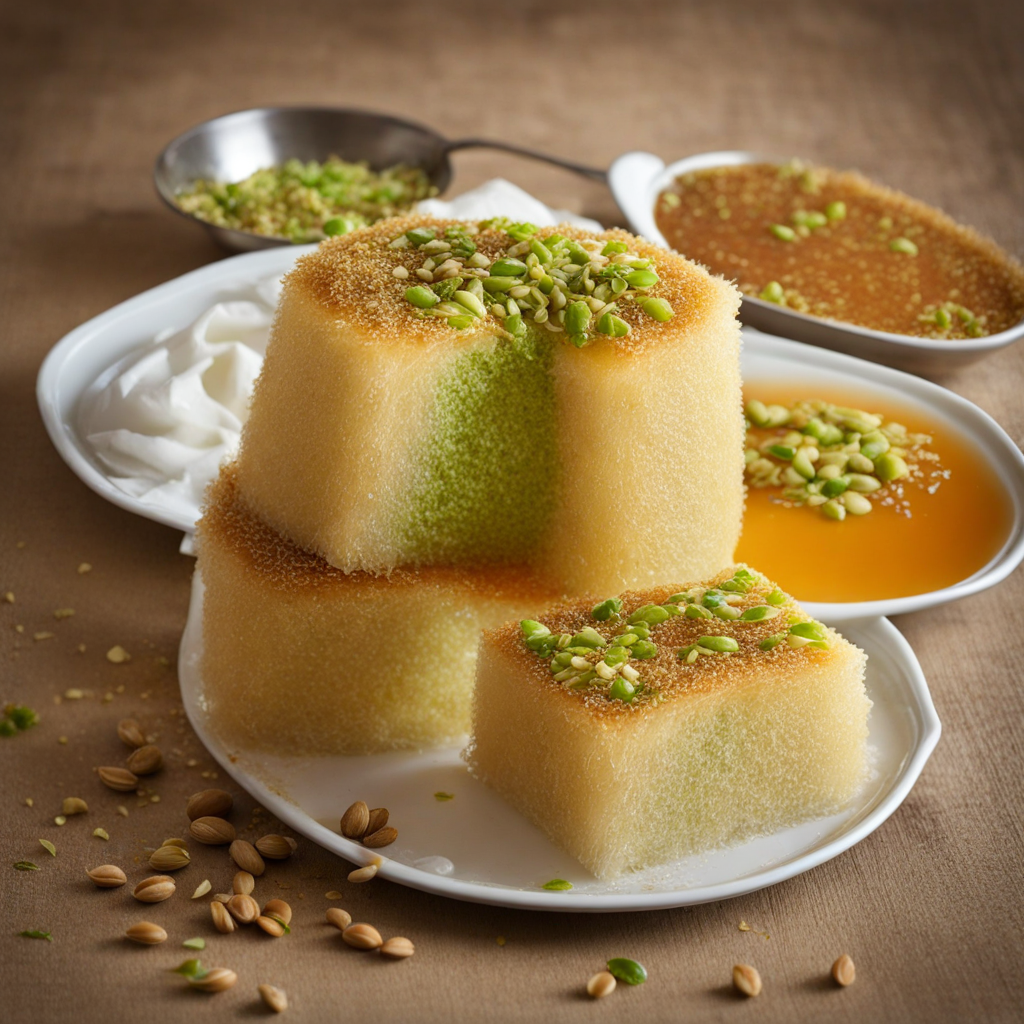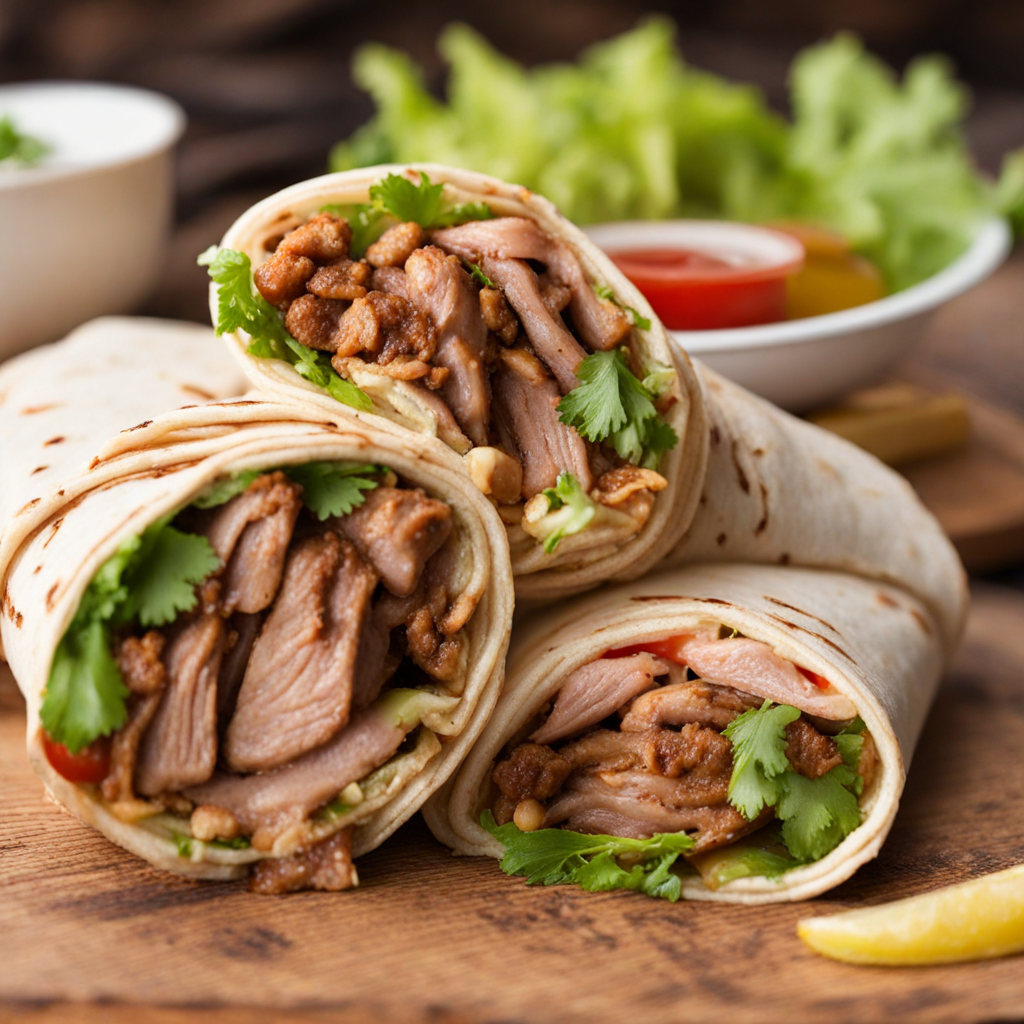Fatteh
Fatteh is a traditional Syrian dish that tantalizes the taste buds with its rich layers of flavors and textures. At its core, Fatteh is composed of crispy pieces of toasted or fried bread that serve as the base, providing a delightful crunch. This bread is typically soaked in a savory broth or yogurt sauce, which infuses it with moisture and flavor. The combination of the crispiness from the bread and the creaminess of the yogurt creates a delightful contrast that sets the stage for the other ingredients to shine. What truly makes Fatteh unique is its versatility and the variety of toppings that can be added. Commonly, it includes spiced meat, often lamb or chicken, that has been slow-cooked to perfection, allowing the flavors to meld beautifully. The dish is often garnished with chickpeas, pine nuts, and fresh herbs like parsley or mint, which add an aromatic lift and a pop of color. The warm spices used in the meat, such as cumin and cinnamon, lend a comforting warmth that is characteristic of many Syrian dishes. Served as a communal dish, Fatteh is not just a meal; it’s an experience meant to be shared with family and friends. The act of digging into the layers, mixing the components together, and savoring each bite creates a sense of togetherness. Whether enjoyed for breakfast, lunch, or dinner, Fatteh delivers a taste of Syrian hospitality and culinary tradition, making it a must-try for anyone looking to explore new and exciting flavors.
How It Became This Dish
The History and Cultural Significance of فتة (Fattah) in Syria #### Origins of فتة The dish known as فتة (Fattah) has a rich history deeply rooted in the culinary traditions of the Middle East, particularly in Syria. Its origins can be traced back to ancient times, with references to similar dishes appearing in historical texts. The word "Fattah" comes from the Arabic root "ف ت ح" (f-t-h), which translates to "to open" or "to break," reflecting the dish's preparation method that involves breaking or tearing bread. Fattah is believed to have emerged during the Islamic Golden Age (8th to 14th centuries), a period characterized by significant advancements in science, philosophy, and the arts, including culinary practices. As trade routes expanded and the Islamic Empire grew, culinary exchanges flourished, bringing together diverse ingredients and cooking techniques from various regions. #### Cultural Significance In Syrian culture, Fattah is more than just a dish; it embodies hospitality and communal sharing. Traditionally served during special occasions, family gatherings, and religious holidays, Fattah symbolizes togetherness. It is often prepared to celebrate important milestones, such as weddings and Eid al-Adha, when families come together to share meals and strengthen bonds. The dish's preparation involves multiple components, each with its own significance. The base is typically made of flatbread, which is torn into pieces and soaked in broth. This step is reminiscent of the resourcefulness of ancient peoples who used stale bread to minimize waste. The broth is generally made from lamb or chicken, and the dish is layered with rice and topped with a rich sauce, which may include tahini or yogurt mixed with garlic and spices. This layering process not only enhances the flavors but also represents the idea of unity through diversity—different ingredients coming together to create a harmonious whole. #### Development Over Time As time progressed, Fattah evolved, adapting to regional tastes and available ingredients. In Syria, variations of Fattah emerged that highlight local flavors. One of the most popular versions features lamb cooked with spices such as cumin, coriander, and cinnamon, resulting in a fragrant and tender meat that complements the bread and rice beautifully. The use of yogurt or tahini adds a creamy texture and tangy flavor, enriching the dish's overall profile. During the Ottoman Empire (1299-1922), Fattah gained prominence as the empire expanded its culinary repertoire. The Ottomans were known for their elaborate feasts and intricate dishes, and Fattah found a place on their tables. This period saw the integration of new spices, cooking techniques, and ingredients from across the empire, further enriching the dish's complexity. In contemporary Syria, Fattah continues to be a beloved staple. It is often served in homes and restaurants alike, with each family boasting its own secret recipe. The dish has also been embraced by the Syrian diaspora, where it serves as a culinary bridge connecting expatriates to their homeland. In this way, Fattah has transcended geographical boundaries, allowing individuals to maintain their cultural identity through food. #### Regional Variations While the Syrian version of Fattah is widely recognized, variations exist across the Arab world. In Lebanon, for instance, Fattah may include chickpeas and a different approach to the sauce, often using a lemony garlic dressing. In Egypt, Fattah is often associated with the celebration of Eid al-Adha, where it is prepared with a whole lamb, showcasing a more festive presentation. These regional variations highlight the adaptability of the dish, allowing it to resonate with different cultures while maintaining its core essence. The common thread among these versions is the emphasis on communal dining, where Fattah is typically served in large platters, inviting everyone to partake. #### Modern Interpretations In recent years, Fattah has seen a revival in the culinary scene, particularly as chefs seek to honor traditional recipes while incorporating modern techniques and presentations. Influential chefs are experimenting with Fattah, infusing it with contemporary flavors and serving it in upscale dining settings. This trend not only elevates the dish but also introduces it to a broader audience, helping to preserve its legacy. Moreover, as the world becomes more conscious of food sustainability, the resourcefulness reflected in the preparation of Fattah resonates with current culinary philosophies. The practice of using leftover bread and ingredients to create a hearty meal aligns with a growing movement towards minimizing food waste, making Fattah a dish that is not only delicious but also ethically conscious. #### Conclusion The history of فتة (Fattah) in Syria is a testament to the resilience of culinary traditions, reflecting the cultural richness and historical depth of the region. From its ancient origins to its modern interpretations, Fattah remains a symbol of community, hospitality, and shared heritage. As it continues to evolve, it captures the essence of Syrian identity while inviting new generations to experience its flavors and significance. In every bite of Fattah lies a story—a story of tradition, adaptation, and the enduring power of food to bring people together. Whether enjoyed in a bustling family home in Damascus or a chic restaurant in Paris, Fattah remains a beloved dish that transcends time and place, reminding us of the universal language of good food and shared experiences.
You may like
Discover local flavors from Syria


